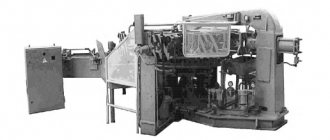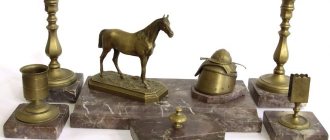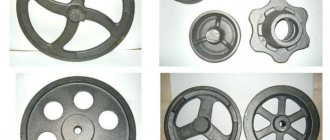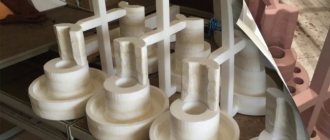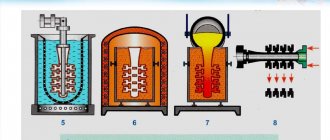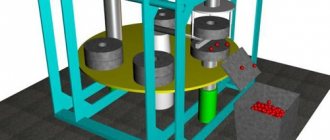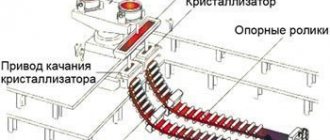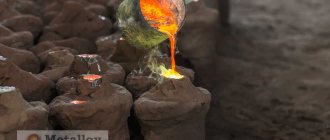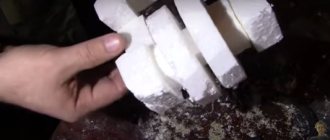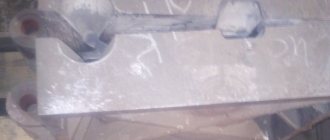Precision lost wax casting technology is the most widely used method for producing jewelry (gold). Every year, through the technology of precision lost wax casting, significant volumes of karat gold alloys are processed. An important factor in this matter is jewelry casting machines that meet the efficiency and quality standards of large-scale production equipment.
Lost wax casting: technology
The LVM process includes the operations of preparing model compositions, making models of castings and gating systems, finishing and controlling the dimensions of models, and further assembly into blocks.
Models, as a rule, are made from materials that are multi-component compositions, combinations of waxes (paraffin-stearin mixture, natural hard waxes, etc.). In the manufacture of model compositions, up to 90% of the waste collected when melting wax models from molds is used. The return of the model composition should not only be refreshed, but also periodically regenerated.
The production of models consists of six stages:
- preparation of the mold;
- introducing a model composition into its cavity;
- holding the model until hardening;
- disassembling the mold and extracting the model;
- cooling it to room temperature.
Casting into the ground
This is the earliest method of metal processing mastered by mankind. It was mastered by our ancestors simultaneously with the beginning of the use of metal products as weapons, tools or utensils, that is, about 5 thousand years ago. The molten metal is cast into a prepared matrix of a mixture of sand and clay. The earliest places for metal processing appeared precisely where deposits of metals in the form of nuggets and placers were located nearby. A typical example is the Kasli plant in the Urals, world famous for its cast iron lace casting.
The lost wax casting method is used for the manufacture of metal products - both ferrous and non-ferrous. And only for metals that exhibit an increased tendency to react in the liquid phase (such as titanium), it is necessary to make matrices from other compositions.
The production process of casting in ASG consists of the following phases:
- making a model;
- preparation of the flask;
- filling and compacting the mixture in the flask;
- metal casting;
- removal and cleaning of the casting.
The form of ASG is for single use. To get the finished product, you will have to break it. At the same time, most of the mixture is available for secondary use.
Compositions of predominantly quartz sands of various grain sizes and plastic clays, the content of which ranges from 3 to 45 percent, are used as materials for AGS. For example, art castings are produced using a mixture with 10-20% clay content; for particularly large castings, the clay content is increased to 25%.
Two subtypes are used:
- Facing mixtures. They are located on the inner surface of the mold and interact with the molten metal. They must be heat-resistant, capable of not collapsing from temperature differences and the resulting stresses. These mixtures have a fine grain to carefully capture surface detail. The ability of the mixture to pass gas is also very significant.
- Filling mixtures. They are used for backfilling between the facing layer and the walls of the flask. They must withstand the weight of the poured metal, maintain the shape of the product and facilitate timely and complete removal of gases. Made from cheaper grades of sand, they can be reused.
If the casting gases do not escape through the molding sand masses, but through the gating system, defects appear in the casting, leading to defects.
The traditional technology of earth casting is illustrated in detail in A. Tarkovsky’s film “Andrei Rublev”. In the short story “The Bell,” the young man Boriska, the son of a deceased master, according to the plot, heads a foundry and casts a church bell.
Precision casting
Precision lost wax casting is the name given to both the technology and the final product itself. High casting accuracy is ensured by the fact that during the preparation of the mold there is no need to remove the product model from it. When using the traditional method, the production of a matrix for casting is a complex and very labor-intensive multi-stage process. This is especially true in the case of casting parts of complex configurations, with recesses, depressions and internal cavities.
For example, when casting a cast iron or copper vase that has a variable surface curvature, you have to use a lot of tricks. So, first the lower half of the flask is filled, then the model is removed, turned over and the upper half is compacted. The model has to be made composite, the handles of the vase are made of two elements, they are pulled out through the model cavity in two steps - first the lower element, then the upper one. All these numerous turnings and dragging cannot have a positive effect on the integrity of the mold surface and, ultimately, on the accuracy of the casting dimensions and the quality of its surface. In addition, there remains the problem of accurately aligning the parts of the flasks and securely fastening them to each other.
The production of lost wax casting does not have these disadvantages; it does not require such high qualifications of modelers and significantly reduces the labor intensity of preparatory operations for casting. This is especially evident with large quantities of castings.
The method allows you to achieve accuracy classes 2-5 according to GOST 26645-85. This makes it possible to cast such high-precision products as turbine blades, cutting tools, including high-performance cutters and drills, critical high-load brackets, small high-load parts of vehicles, machine tools and other complex mechanisms.
High dimensional accuracy and high surface quality minimize the need for further machining of the casting, which saves metal and reduces production costs.
conclusions
Computer modeling of the crystallization process of the “Corpus” casting using CAM LP allowed:
- identify the places of occurrence and the process of formation of defects;
- track in real time changes in temperature-phase fields of the crystallization process;
- obtain the distribution of velocity and pressure vectors;
- formulate recommendations for optimizing LPS;
- obtain data on the distribution of liquid metal flow and the movement of slag particles in the casting.
Thus, it was possible to optimize the gating-feeding system in the shortest possible time without refining the pattern equipment, creating a ceramic shell, pouring and machining the part, and the duration of the process of developing the technology for obtaining suitable castings was reduced from 30 to 3-5 days, t .e. 6−10 times.
Using the LVMFlow program allows the foundry technologist to visualize the processes occurring during the formation of a casting, quickly make changes to the technology, optimize the gating-feeding system and ensure the production of a casting with the required metal density, operating in aggressive environments and high pressures.
Yuri Savelyev, Deputy Chief Metallurgist of the Federal State Unitary Enterprise "Voronezh Mechanical Plant" Tel.: (0732) 34−8217 Vladislav Turishchev Leading Engineer Consistent Software Voronezh, Engineer of the Department of Physics, Chemistry and Technology of Foundry Processes of the Voronezh State Technical University Tel.: (0732) 39− 3050 Email
Books tagged “lost wax casting”
The textbook describes the processes of producing model kits, preparing molding and core mixtures, making foundry molds and cores, melting, pouring, knocking out and cleaning castings. Designs and methods for calculating gating systems for castings made of various alloys are presented.
The fundamentals of the theory of foundry processes, issues of preparing liquid alloys, as well as the features of the production of castings from malleable iron, steel, and non-ferrous alloys are outlined. General information on special casting methods is provided.
The textbook is written in accordance with the curriculum for technical schools in the specialty “Foundry of ferrous metals” and is intended for students of mechanical engineering technical schools.
In the section Casting
Tags: LGM, Casting alloys, Sprue, Casting, Chill casting, Lost wax casting, Die casting, Steel casting, Iron casting, Casting annealing, Casting, Iron smelting, Molding, Molding sand, Molding material
Basic information about metals and casting alloys, melting units and smelting technology is provided. Characteristics of molding materials, typical molding and core mixtures, non-stick coatings, etc. are given. Issues of designing casting manufacturing technology are analyzed.
Basic information about progressive technological processes, means of their mechanization and automation is presented.
May be useful for SPTU students and foundry technologists.
In the section Casting
Tags: LGM, Casting properties, Casting alloys, Casting, Chill casting, Shell casting, Lost wax casting, Steel casting, Casting, Iron smelting, Steel, Molding sand, Molding sands, Centrifugal casting, Cast iron
Basic information is provided on technical requirements for castings from non-ferrous alloys, manufacturability of the design of cast parts, foundry non-ferrous alloys, charge and molding materials, tooling and equipment, casting technology and heat treatment, finishing operations, quality control and safety precautions. It may also be useful for university students for engineering and technical workers in foundries.
In the section Casting
Tags: Mold pouring, Plaster casting, Chill casting, Shell casting, Squeeze and dip casting, Lost wax casting, Injection casting, Low pressure casting, Pouring features, Flame furnaces, Preparation of master alloys, Casting design, Technical requirements for castings, Non-ferrous casting, Centrifugal casting, Charge, Electric furnaces
Gating-feeding system for investment casting
Its features are as follows:
1. This method has been used in foundries for a long time, makes it possible to make complex structures, and simplifies the production process. The system consists of:
- funnels for casting;
- supports;
- feeders and sump.
When pouring, the jet is divided in the sump, which reduces the temperature effect. This has a positive effect on the quality of the casting. It is used in mechanical engineering and other industries.
2. The following shortcomings may appear:
- hydrodynamic shock can create cracks in the ceramic mold;
- increasing the casting jet can destroy the shell;
- turbulence of the jet can provoke the detachment of elements and their entry into the structure of the finished product.
To prevent this, a technical solution has been developed to separate the jet of hot metal, which protects the overall structure from premature destruction.
3. The correct balance between the advantages and disadvantages of such a design during casting will reduce the negative impact by 40%. To do this you need to do the following:
- the model is made from ordinary materials; a certain number of layers are applied to the mold to protect it from temperature effects;
- Each layer after application must dry 100%;
- During the period of pouring molten metal, the jet gradually increases.
This all leads to an increase in the strength of the shell and a decrease in the impact on it. A simple solution in investment casting leads to the use of the system on an industrial scale. This significantly reduces the cost of finished products.
Technological properties of the alloy.
It is not advisable to use casting in metal molds:
- with reduced fluidity of the metal, because high cooling rates lead to rapid cooling and crystallization of the molten metal, which can cause the formation of underfills and joints;
- with a high tendency of the material to shrink, since cracks may form due to the low compliance of the mold, which prevents the free shrinkage of the casting in the mold.
This is interesting: Types and applications of stainless steel wire - learning the essence
Supply of stainless steel castings
Our company supplies manufactured stainless steel products to all cities of Russia with the help of transport companies. Stainless steel castings are sent to: Aginskoye, Adler, Alexandrovsk, Amursk, Angarsk, Arzamas, Armavir, Arsenyev, Astrakhan, Achinsk, Akhtubinsk, Achinsk, Baikalsk, Balashikha, Barnaul, Bataysk, Belgorod, Beloretsk, Berezniki, Birobidzhan, Blagoveshchensk, Bryansk, Bugulma, Veliky Ustyug, Vladivostok, Vladimir, Vladikavkaz, Volgograd, Volgodonsk, Vologda, Volkhov, Voronezh, Votkinsk, Voskresensk, Vyazma, Glazov, Golitsyno, Gus-Khrustalny, Dzerzhinsk, Dubna, Yegoryevsk, Ekaterinburg, Yelabuga, Yeisk, Yeniseisk, Ershov , Zheleznogorsk, Zelenograd, Zvenigorod, Ivanovo, Yoshkar-Ola, Kazan, Kaluga, Kamensk-Uralsky, Kaspiysk, Kirov, Klin, Kolomna, Kovrov, Kostroma, Krasnodar, Kuznetsk, Lipetsk, Labinsk, Lyubertsy, Mozhga, Moscow, Murom, Murmansk , Naberezhnye Chelny, Nazran, Neftegorsk, Neftekamsk, Nizhnevartovsk, Nizhny Novgorod, Nizhnekamsk, Novokuznetsk, Novorossiysk, Novocherkassk, Novosibirsk, Orel, Orekhovo-Zuevo, Orenburg, Orsk, Pavlovsky Posad, Penza, Petropavlovsk-Kamchatsky, Pskov, Rybinsk, Ryazan, Samara, Sarapul, St. Petersburg, Saratov, Saransk, Sasovo, Sarov, Sergiev Posad, Snezhinsk, Smolensk, Sterlitamak, Tambov, Tomsk, Tula, Tyumen, Ulyanovsk, Ufa, Khanty-Mansiysk, Khabarovsk, Yakutsk, Yaroslavl, Chelyabinsk and others .
Lost wax casting - description of technology, use at home
It is not always possible to produce the required steel part by stamping or lathe processing. This is especially true for thin-walled workpieces of complex shape. In this case, lost wax casting is used. A description of the technology will be useful not only for general development - it can be adapted for work at home.
General scheme
The principle of pattern casting is the preliminary production of a mold, which, after certain processing, is filled with metal. But first you need to decide on the main stages of this process.
Generalized technological scheme
The first thing that precedes casting is making the mold. In factory conditions, split aluminum molds are used for this. Their configuration corresponds to the shape of the future workpiece, but has large dimensions. Typically, mold parts are made by pressing aluminum blanks.
Model
The material used to manufacture the primary mold is a material with a low melting point: paraffin, stearin, wax or ethylcellulose. In this case, the pouring temperature should not exceed 100°C. In the solid state, the model composition has a sufficient degree of plasticity to fill the entire space of the mold.
| Model composition | Legend | Filling temperature, °C |
| Paraffin-stearine | PS 70-30 | 65-80 |
| Paraffin-stearine | PS 50-5i | 75-80 |
With a complex product configuration, several models can be manufactured, which are connected to each other by slightly heating the end parts.
Filled mold
Form
A special ceramic-based composition is applied on top of the model. For better thermal resistance, it is sprinkled with fine-grained sand with the addition of zirconium. Depending on the dimensions of the product, this process can be repeated from 3 to 7 times. The minimum thickness of the ceramic mold should be 7 mm.
Ceramic treatment
At this stage, it is important to comply with the following conditions:
- Uniform distribution of the composition over the entire surface of the model.
- No internal voids. They will lead to incorrect product configuration.
- The critical temperature at which the mold does not change its dimensions must be greater than the temperature of the molten metal. Typically this is from 900 to 1200°C.
Once the formation is complete, holes must be made to remove the wax material. The molds are placed in an oven, where the paraffin evaporates under the influence of high temperatures. If necessary, additional afterburning of the ceramic mold is carried out.
Finished casting
The main problem with lost wax casting at home is the frequent occurrence of mold defects when molten metal is poured into it. Therefore, its surface is first heated to the temperature of the filled mass. In this case, heat treatment should be done evenly over the entire surface of the ceramic workpiece.
Metal is poured into the previously formed neck. Cooling occurs at room temperature. Forced cooling of the product is not allowed.
Pouring metal
After 4-6 hours, the surface ceramic shell can be removed. In industrial conditions, a vibration machine is used for this. The main stage is cutting off the sprue. Subsequently, the product can be processed with compressed air and sandblasting.
Areas of use
A general description of the technology does not give an idea of the practical application of this scheme. Currently, it is used in mechanical engineering and in the manufacture of complex structures. Considering the high accuracy of the resulting parts and the relatively low cost of their production, lost wax casting is actively used in the following areas:
- Mechanical engineering, shipbuilding and instrument making. It has been used relatively recently, since during production there were problems with the quality of the formed shape. The advent of ethyl silicate made it possible to achieve the required thermal stability and viscosity.
- Jewelry industry. Since the melting point of gold, silver and bronze is much lower than that of steel, the quality requirements for ceramic blanks make it possible to do casting at home.
- Dental prosthetics.
The most striking examples of the use of the wax casting method are the monuments of St. Petersburg - Peter the Great and the “Horse Tamer”, installed on the Anichkov Bridge. Compliance with technology and the use of appropriate compositions allows us to achieve the production of high-precision parts, jewelry, and works of art.
Main stages of lost wax casting
- A sample model is created.
- The sample is attached to the center sprue.
- The sample and sprue are dipped into the refractory material several times, creating a shape around the sample.
- The sample is removed from the refractory mold. The mold is ready to be filled with metal.
- The metal is poured into the mold.
- After cooling, the mold material is removed by mechanical processing, chemical cleaning or dissolution in water.
- The parts are cut from the center sprue and lightly cleaned.
Creating new products, and especially foundry parts, is the most time-consuming and expensive part of the technological process. In standard production, a new iteration of a product often requires new foundry equipment, since upgrading the existing one is either too expensive or impossible.
It is not for nothing that additive technologies are called revolutionary: they have made it possible to reduce the production time of products for pilot production by several times and even tens of times. For example, a prototype of a car engine cylinder block can be 3D printed in just two weeks, while its production using traditional methods takes six months. 3D printing not only saves time, but also allows you to grow models and shapes of any complexity. Casting has limited possibilities in this sense.
When it comes to the precision of a part, the use of 3D printing is also unparalleled. This technology is most widespread in jewelry, dentistry, and instrument making - in those industries where small sizes and complex geometry of the product are a priority. When manufacturing objects such as small machine parts, jewelry, dental prostheses or implants, particularly high precision and quality castings are in demand.
Photo 1. Models created on a wax 3D printer
The secret of demand for stainless steel castings
The external attractiveness of the metal and its increased wear resistance allow the products to fit into the interior of buildings and solve various technological tasks in construction and mechanical engineering. For example, stainless steel makes high-quality canopies for houses or sheds.
The use of stainless steel in the manufacture of furniture can be called successful. In this case, the metal can not only give wear resistance to the product, but also help solve design problems.
Stainless steel products are usually very practical and have a long life. In addition, stainless steel, unlike other metals, does not require special care. Periodic cleaning with a soft sponge and detergent is sufficient. Therefore, shelving, display cases, and components for warehouses are created from it.
Materials used
Materials for the manufacture of the shell are divided into the following groups: base materials, binders, solvents and additives. The first include dust, used for preparing suspensions, and sand, intended for sprinkling it. They are quartz, chamotte, zircon, magnesite, high-alumina chamotte, electrocorundum, chromium magnesite and others. Quartz is widely used. Some shell base materials are obtained in a ready-to-use form, while others are pre-dried, calcined, ground, and sifted. A significant disadvantage of quartz is its polymorphic transformations, which occur with temperature changes and are accompanied by a sharp change in volume, ultimately leading to cracking and destruction of the shell.
Smooth heating of the molds in order to reduce the likelihood of cracking, which is carried out in the supporting filler, increases the duration of the technological process and additional energy costs. One of the options for reducing cracking during calcination is to replace pulverized quartz sand as a filler with dispersed quartz sand of a polyfractional composition. At the same time, the rheological properties of the suspension are improved, the crack resistance of the molds is increased, and defects due to blockages and breakdown of shells are reduced.
Lost wax casting process
Lost wax casting technology consists of several stages:
- Creating a model for casting.
- Obtaining a mold from a manufactured model.
- Obtaining a casting mold.
- Production of finished casting.
Titanium investment casting
Creating a model
To manufacture the primary form, materials with a low melting point are used. The most commonly used are paraffins, wax, etc. That is, those substances have a melting point that does not exceed 100 degrees, for example, the composition is PS 70 - 30. At this temperature, paraffin melts into the entire mold. So, they call the part in which the casting mold is made.
After the model has acquired the necessary hardness, you can begin making the casting mold. To do this, use a composition made on the basis of ceramics. The form must have a certain resistance to temperature influences. To do this, fine sand is applied to the surface of the model, and zirconium is added to the sand to improve the characteristics of the form.
Fine sand
The process of applying sand can be repeated from 3 to 7 times. The optimal thickness of such a coating can be about 7 mm.
At this stage, it is necessary to ensure that the following conditions are met:
- The distribution of the composition over the surface of the model should be uniform.
- Internal voids should not be allowed to appear. Their presence can lead to errors in the casting configuration.
- The mold must withstand a temperature that must be higher than the temperature of the metal melt. It should be in the range from 900 to 1200 degrees.
- After the formation has stopped, it is necessary to make holes through which the paraffin will be removed.
- Upon completion of all work related to obtaining the mold, it is placed in the oven. In it, paraffin evaporates and additional combustion of the mold occurs.
Casting process
Before starting casting molten metal using lost wax models, it is necessary to heat the mold to a certain temperature. Heating must be carried out evenly throughout the entire mold.
To cast lost wax models in a mold, it is necessary to prepare the neck of the workpiece in advance. Metal is poured into the previously formed neck. Cooling should occur naturally. Forced cooling is unacceptable.
Model casting process
After 5 - 6 hours after casting is completed, the shell can be removed. In factory conditions, a vibrating table is used for this. After that, the part is sent for machining. That is, they cut off the sprue and clean off the flash, if any. For this purpose, manual and mechanized tools are used. By the way, one of the effective ways to bring a part in accordance with the requirements of design documentation is sandblasting.
Characteristics of steel
The basis of any grade of steel is iron and carbon. The amount of the latter varies within 0.1–2.14%. The higher its content, the better the quality of the steel. If the amount of carbon exceeds 0.6%, the alloy is called high-carbon. When the percentage of carbon exceeds 2.14, the material is called cast iron.
When steel is melted, alloying additives are added to it, which changes the mechanical properties of the alloy. These include:
An important element in an alloy alloy is chromium. When its content is over 12%, the material acquires anti-corrosion characteristics. It is called stainless steel.
During steel production it is impossible to get rid of all impurities; some of them remain. These include:
They degrade the quality of the alloy. Their percentage should be less.
An important characteristic of an alloy is its melting point. It is located in the range of 1350–1521 degrees. Carbon and alloying additives influence the increase in this value. It is necessary to know the temperature indicators accurately, since heating should be carried out 100–150 degrees higher than permissible.
Manganese
Gating-feeding system for investment casting
Its features are as follows:
1. This method has been used in foundries for a long time, makes it possible to make complex structures, and simplifies the production process. The system consists of:
- funnels for casting;
- supports;
- feeders and sump.
When pouring, the jet is divided in the sump, which reduces the temperature effect. This has a positive effect on the quality of the casting. It is used in mechanical engineering and other industries.
2. The following shortcomings may appear:
- hydrodynamic shock can create cracks in the ceramic mold;
- increasing the casting jet can destroy the shell;
- turbulence of the jet can provoke the detachment of elements and their entry into the structure of the finished product.
To prevent this, a technical solution has been developed to separate the jet of hot metal, which protects the overall structure from premature destruction.
3. The correct balance between the advantages and disadvantages of such a design during casting will reduce the negative impact by 40%. To do this you need to do the following:
- the model is made from ordinary materials; a certain number of layers are applied to the mold to protect it from temperature effects;
- Each layer after application must dry 100%;
- During the period of pouring molten metal, the jet gradually increases.
This all leads to an increase in the strength of the shell and a decrease in the impact on it. A simple solution in investment casting leads to the use of the system on an industrial scale. This significantly reduces the cost of finished products.
The importance of steel in global industry
Steel is a material that is of utmost importance. A rare design can do without it. If we compare steel production with all non-ferrous metals, then its total output is 90%. Industrialization creates a constant demand for such material. It is in demand in any industry.
No production can do without bolts, nuts, washers or nails. Steel is used in large-scale projects. First of all, these are bridges, where the basic foundation is a metal frame. Aviation cannot do without it. A large amount of material goes into laying the rails. Even if the product is made of plastic or other non-metallic material, it may have a steel skeleton.
Manufacturing of gasified models
The process of obtaining models in mass and large-scale production consists of two stages: preliminary foaming of the initial granules of expandable polystyrene in a free state and final foaming of the granules in a closed cavity of the mold - obtaining the model.
Pre-heat treatment
foaming polystyrene is necessary to obtain a subsequently gasified model with a given volumetric mass (density), which determines the strength of the model and the quality of the surface. The foaming ability of granules of a given dispersion is determined by the temperature and time of heat treatment (Figure 7.2).
Figure 7.2
– Increase in the volume of polystyrene foam granules (V) depending on temperature (numbers near the curves) and duration of foaming (t): solid lines – initial granule size 2.5 mm; dotted – 1.5 mm
With an increase in the duration of heat treatment, the volume of the granules increases and, accordingly, the bulk density of the foamed granules decreases. Increasing the processing temperature leads to a reduction in the time at which the granules reach their maximum volume. But at temperatures above 95°C the process becomes unstable and overexposure of the granules leads to loss of activity and shrinkage. This is due to an increase in the rate of deformation of the polystyrene shell of the granules with increasing temperature, as a result of which the walls of individual cells of the granules are destroyed and the loss of porogen occurs.
In enterprises with a small production volume, it is advisable to carry out preliminary foaming in hot water. To do this, the original polystyrene granules are placed in water at a temperature of 95 - 100 ° C and kept for 1 - 10 minutes with constant stirring to ensure uniform heat treatment and prevent the granules from sticking together. After the period of time necessary to foam the granules to a given bulk mass, they are removed and placed on racks with a mesh bottom for drying and exposure to air.
To heat the granules during pre-foaming, steam and high-frequency currents are also used. In large-scale and mass production conditions, superheated steam is most often used.
After preliminary foaming, the granules are kept in air for 6 hours to 2 days. During this period, the shell of the granules, cooling, again transforms into a glassy solid state, and isopentane vapor condenses, which leads to the appearance of a vacuum in the granules. During the holding process, air diffuses into the granules and the pressure equalizes. To reduce the holding time of foamed granules, you can use their holding at a pressure increased to 0.2 - 0.3 MPa.
Type of steel
Depending on the percentage of impurities, steels are divided into the following types:
- ordinary quality;
- quality;
- improved quality;
- high quality.
An important characteristic is the ability of the material to weld. This depends on the degree of deoxidation of the impurities contained.
The classification is as follows:
- Calm. Impurities are completely deoxidized.
- Semi-calm. They have similar characteristics.
- Boiling. Poor ability to deoxidize non-metallic elements.
In addition, steel is classified according to its area of use:
name of category
Iron casting technology
The technology of cast iron casting was first mastered in China around the 10th century AD; in Europe it was first mentioned in the 14th century as a material for the production of cannons. In Russia, the first “iron casting suitable for making cannons” dates back to the era of Ivan IV Rurikovich. The heyday of the cast iron era came in the 19th and 20th centuries. At this time, bridges and pipelines, lanterns and fences, elements of architectural decor and load-bearing structures of buildings were made from it. In addition, rails, parts of machine tools, and engines were cast from the same material. Separately, it is worth mentioning cast iron cookware, irons and heating appliances.
Cast iron was also the starting component for the production of steel using the open-hearth method. The volume of its production was the most important indicator of the country's economic power and its military potential. With the invention of inexpensive technologies for the production and processing of aluminum and steel alloys, the importance of cast iron as a structural material has noticeably decreased. The widespread development of the production of high-strength plastics and composite materials has finally pushed cast iron from the forefront.
Lost wax casting process
Lost wax casting technology consists of several stages:
- Creating a model for casting.
- Obtaining a mold from a manufactured model.
- Obtaining a casting mold.
- Production of finished casting.
Titanium investment casting
Creating a model
To manufacture the primary form, materials with a low melting point are used. The most commonly used are paraffins, wax, etc. That is, those substances have a melting point that does not exceed 100 degrees, for example, the composition is PS 70 - 30. At this temperature, paraffin melts into the entire mold. So, they call the part in which the casting mold is made.
After the model has acquired the necessary hardness, you can begin making the casting mold. To do this, use a composition made on the basis of ceramics. The form must have a certain resistance to temperature influences. To do this, fine sand is applied to the surface of the model, and zirconium is added to the sand to improve the characteristics of the form.
Fine sand
The process of applying sand can be repeated from 3 to 7 times. The optimal thickness of such a coating can be about 7 mm.
At this stage, it is necessary to ensure that the following conditions are met:
- The distribution of the composition over the surface of the model should be uniform.
- Internal voids should not be allowed to appear. Their presence can lead to errors in the casting configuration.
- The mold must withstand a temperature that must be higher than the temperature of the metal melt. It should be in the range from 900 to 1200 degrees.
- After the formation has stopped, it is necessary to make holes through which the paraffin will be removed.
- Upon completion of all work related to obtaining the mold, it is placed in the oven. In it, paraffin evaporates and additional combustion of the mold occurs.
Casting process
Before starting casting molten metal using lost wax models, it is necessary to heat the mold to a certain temperature. Heating must be carried out evenly throughout the entire mold.
To cast lost wax models in a mold, it is necessary to prepare the neck of the workpiece in advance. Metal is poured into the previously formed neck. Cooling should occur naturally. Forced cooling is unacceptable.
Model casting process
After 5 - 6 hours after casting is completed, the shell can be removed. In factory conditions, a vibrating table is used for this. After that, the part is sent for machining. That is, they cut off the sprue and clean off the flash, if any. For this purpose, manual and mechanized tools are used. By the way, one of the effective ways to bring a part in accordance with the requirements of design documentation is sandblasting.
Formulation of the problem
One of the main problems faced by specialists at the Voronezh Mechanical Plant was the issue of providing power to the casting with metal, since the complexity of manufacturing the ceramic shell and the duration of the technological process made it difficult to find optimal crystallization conditions.
To solve this problem, the LVMFlow automated casting process modeling system was used to analyze the crystallization processes of the “Body” type casting, which has a number of advantages compared to similar systems on the world market. LVMFlow is based on the finite difference method (FDM), which allows one to analyze the filling of a mold with a melt, taking into account preheating of the mold. In this case, there is no need to draw the ceramic shell in an external design program, since the system allows you to create a shell shape within a few seconds.
| Rice. 1a. Vertical location of the casting | Rice. 1b. Horizontal location of the casting |
The design of the part can be presented in the form of two cylindrical bodies interpenetrating at an angle of 90° with extended thin walls and massive flanges. Its peculiarity is the pronounced variation in thickness (the ratio of wall and flange thicknesses is 30:100 mm) and the presence of thermal centers at the transition points from thin to thick elements.
Based on the known patterns of the formation of castings, it can be argued that casting such a design will lead to the appearance of defects of a shrinkage nature. To avoid this and ensure tightness, it is necessary to achieve consistent development of crystallization of the casting in compliance with the principle of directional solidification. Of course, achieving the desired result largely depends on the location of the casting during pouring, so two main options for such an arrangement were considered: vertical (Fig. 1a) and horizontal (Fig. 1b).
In the first case, the ceramic shell was placed in such a way that the casting passage channel was formed in a horizontal position, and the gate channel body was formed in a vertical position. Individual profits were installed for each massive element in the casting (three flanges). During pouring, the longest walls were oriented vertically in the ceramic shell. With this arrangement, the walls are fed during the solidification process sequentially through massive flanges towards the profits.
On the central and two side flanges, local profits were installed (one annular and two rectangular), communicating with each other through gating passages, which made it possible to supply hot metal to the side profits at the final stage of pouring. The melt entered the shell cavity through a metal receiver and four distribution channels.
The design of the LPS is shown in Fig. 2.
Rice. 2. Scheme of the gating-feeding system 1 - melt; 2 - ceramic funnel; 3 - thrust; 4 — metal receiver; 5 - distribution channel; 6 - profit of rectangular section; 7 - sprue channel; 8 - ring profit; 9 - casting; 10 - refrigerator
In the area of the massive “blind pocket” located in the lower part of the casting, a refrigerator was used to enhance the direction of solidification of the metal. The ceramic shell was molded into a flask with fireclay filler, and the melt was poured into molds heated to 750 °C. The melt temperature was about 1590 °C.
The quality of the resulting castings was controlled using radiographic examination; and the tightness of the housings - through hydrostatic tests.
Analysis of the data obtained showed that the characteristic defect of body castings under such conditions of casting formation is looseness and porosity. This is most evident in the walls of a horizontal passage channel. At the same time, the most severely affected areas were the transition points from the thin-walled channel elements to the flanges and the massive part of the blind channel. Somewhat less looseness is inherent in the vertically located walls of the lower tier of the body and the vertically oriented side flanges.
Since the resulting distribution of defects did not meet the requirements for the tightness of the castings, the second method was used - horizontal arrangement.
Forming a casting in a ceramic shell is a very complex process, so it is almost impossible to take into account all the factors influencing the crystallization process. It is not possible to experimentally test all variants of LPS due to the complexity and duration of the process of obtaining a casting. It takes several weeks to develop a variant of the gating-feeding system before obtaining a pilot casting; therefore, the LVMFlow automated modeling system for casting processes was used to analyze the solidification process of the “Case” casting.
Rice. 3. Initial geometric model
The horizontal arrangement of the casting provided for the presence of five profits, one of which was installed in the center of the casting, three on the flanges, and another one on the conical part of the casting (in the area of the saddle). As with the vertical location of the casting, all the profits were interconnected into a single whole, which at the final stage of casting made it possible to ensure the supply of hot metal to the profits.
Based on the initial drawings of the casting, Consistent Software Voronezh specialists, together with employees of the department of the chief metallurgist of the Voronezh Mechanical Plant, built a three-dimensional model of the “Case” casting with LPS (Fig. 3).
When constructing the initial geometric model of the casting (GM), external design programs Autodesk Inventor Series and Unigraphics were used.
Application area
In industry, historically, lost wax casting is used in mechanical engineering, in particular, this technology is used to cast body parts for products of the electrical industry, ship parts, and automobiles.
Lost wax casting in mechanical engineering
It should be noted that such widespread use of casting using this technology began to be used on an industrial scale relatively recently. This was due to the fact that there were certain problems in obtaining the form. It became possible to solve them after the appearance of a chemical such as ethyl silicate. Its use made it possible to achieve the required indicators for thermal resistance and viscosity of the material.
